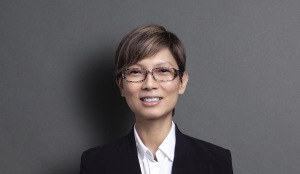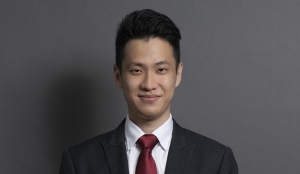The renewables landscape in Singapore in Q1 2023
The key motivation for Singapore has always been to ensure that the nation has a reliable and secure energy supply and to constantly promote effective market competition.
Singapore is continuing to facilitate the deployment of solar photovoltaic (PV) systems on all available fronts, and the government has consistently led the way with laudable efforts to aggregate demand for solar PV across all government agencies. As of the third quarter of 2022, there are already more than 6,000 grid-connected Solar Photovoltaic (PV) Installations in Singapore for residential and non-residential facilities. The excess solar power being sold back to the grid has created a flourishing market for offsite or virtual power purchase agreements. Of note as well is Singapore’s excellent track record for deploying floating solar farms on reservoirs and offshore spaces - these are green waterworks systems which integrate green technology with water treatment.
Cognizant of the need to address the intermittent nature of solar energy, Storage Systems (ESS or large-scale batteries which can store energy and dispense it for later use) are also increasingly being deployed, and the Sembcorp ESS which is Southeast Asia's largest ESS with a maximum storage capacity of 285 MWh was opened in February 2023.
Singapore is aiming to import a total of 4 GW of low-carbon electricity into Singapore by 2035, which is expected to make up around 30% of Singapore’s electricity supply in 2035. The Lao PDR-Thailand-Malaysia-Singapore Power Integration Project (LTMS-PIP) successfully commenced in June 2022 where up to 100 MW of renewable hydropower will be traded from Lao PDR to Singapore via Thailand and Malaysia using existing interconnections. In March 2023, it was also announced that Keppel Energy has obtained regulatory approval to import 1 GW of renewable electricity generated from solar energy, hydropower and potentially wind power from Cambodia through over 1,000 kilometres of new subsea cables.
Singapore has determined that low-carbon hydrogen can play an important role to decarbonise its power sector, and that hydrogen could meet up to 50% of Singapore’s projected electricity demand by 2050. Utility-scale Combined Cycle Gas Turbines (CCGTs) that can combust a blend of hydrogen and natural gas are already available, while CCGTs able to run fully on hydrogen are expected to become available in around 2030. The government is partnering with international and industry players to realise its hydrogen strategy, but will likely pace the country’s hydrogen deployment and infrastructure development in line with technological and global progress. An Expression of Interest (EOI) to Develop an End-to-End Low or Zero-Carbon Ammonia Power Generation and Bunkering Solution in Singapore was put out in February 2023.
Global trends such as decentralisation, decarbonisation and digitalisation are clearly revolutionalising the way energy is generated, transmitted and distributed to consumers. The government is vigorously seeking ideas and partnerships to modernise Singapore’s grid whilst maintaining the reliability and resilience of its power supply. Key themes include the deployment of microgrids and the use of demand side management to optimise energy use. It is now critical that investments in renewable energy projects and R&D into new technologies stay the course to help decarbonise the Singapore power sector.
Solar Power and PPA
Electricity is a major cost factor for industrial plants and data centres in Singapore, which means that there is a pressing need for such facilities to secure its own onsite power supply if possible. Solar PVs installed onsite at industrial facilities provide a reliable supply of green energy at a price below the rate set by utilities. Solar Power Purchase Agreements (PPAs) have therefore become an important aspect of energy procurement.
In Singapore, the Onsite PPA is a bilateral contract which allows an independent power producer (IPP) to finance, install, and operate solar energy systems (rooftop or arrays) at no cost. The Onsite PPA is typically a long-term contract in excess of 10 years to enable the IPP to recoup its investment. The IPP retains ownership of the solar energy systems and sells solar generated electricity to the industrial facility at a fixed rate, usually at a discount off the tariff rate set by utilities (the regulated electricity tariffs increased by 20.8% from an average of S$0.22 per kWh in 2020 to an average of S$0.27 cents per kWh in Q2 2022). The IPP also typically warrants a guaranteed energy output on an annual basis. The Onsite PPA is usually highly negotiated, particularly by large consumers, with the clauses on termination, relocation and force majeure being the most contentious .
Offsite PPAs (sometimes called Virtual PPA (VPPAs) or Corporate PPAs) are also gaining favour as a means for industrial facilities to hedge against fluctuating energy cost. Under an Offsite PPA, no sale of actual electrons take place although the IPP is required to remotely inject power into the grid from a solar project. The Offsite PPA or VPPA is a financial transaction, exchanging a fixed-price cash flow between the IPP (seller) and the industrial facility owner (buyer) for a variable-price cash flow and renewable energy certificates (RECs) for a fixed term. The formula for the settlement is based on a CfD and the IPP is expected to generate and deliver energy reliably to an agreed delivery point during the settlement term. Grid related disruption events which prevent the delivery of energy to the delivery point by the IPP, as well the solar energy systems’ expected capacity and the minimum installed capacity are usually closely scrutinised in the Offsite PPA or VPPA. In many cases, the buyer may also insist on audit rights or periodic reconciliation of the settlement sums.
Electricity Imports
Whilst solar power remains the most promising renewable energy source in the near term, it is vital that Singapore has a diversified palate of renewable energy sources that it can tap on to power its growth. However, there are limitations on other potential clean energy sources and therefore power import has risen to prominence.
The Energy Market Authority (EMA) is the statutory body in Singapore that is responsible for developing the technical and regulatory frameworks for importing electricity into Singapore. The licensing regime for the import of electricity is currently governed by the Electricity Act 2001. A useful Guide to Electricity Imports has been published by the EMA to provide regulatory clarity on how electricity imports will be treated in Singapore’s electricity market and how electricity imports may enter Singapore.
Electricity importers are required to participate in Singapore’s Wholesale Electricity Market, comply with the Electricity Market Rules and operate within the same market as other power generators. Legal agreements that electricity importers need to sign on and accede to include:
- the Power System Operator- Market Participant Agreement to allow EMA (as the Power System Operator (“PSO”)) to enforce obligations under the Electricity Market Rules vis-à-vis the electricity importer;
- Import Facility Operating Agreement to enable the PSO to centrally dispatch the electricity importer’s import facility;
- Importer Connection Agreement with SP PowerAssets Ltd (“SPPA”) to use any SP-owned Interconnectors and gain access to the Singapore grid; and
- Agreement with the Market Support Services Licensee (SP Services) for the provision of metering services.
Electricity imports will also require the development of infrastructure (i.e. land and sea space, development of subsea cables) to enable the importation of electricity and the EMA has expressed in the Guide to Electricity Imports that the initial construction of such imports infrastructure may be best handled by the importer, with the importer’s share of the assets within Singapore’s borders subsequently transferred to SPPA.
As alluded to in the introduction above, the pilot LTMS-PIP project to import up to 100 megawatts (MW) of renewable hydropower from Laos through Malaysia and Thailand was the first renewable energy import that the Singapore has ventured into. Closely following up on the LTMS-PIP project is another joint agreement between YTL PowerSeraya and TNB Geneco inked earlier this January for Singapore to import 100MW of electricity from Malaysia as part of a 2-year trial. This is the first time that electricity will be supplied to Singapore on a commercial basis.
In March 2023, it was announced that Keppel Energy has been granted conditional approval to import 1 gigawatt (GW) of hydropower, solar and potentially wind power from Cambodia annually. The electricity generated will be transmitted via subsea cables of more than 1,000km in length and is expected to commence after 2030.
Singapore’s foray into electricity imports is not without setback however. In January this year, Australia’s Sun Cable had announced that it was entering into voluntary administration. This is notwithstanding that the company had reached an investment milestone just in June last year to help finance a S$27.5 billion project renewable energy project, known as the Australia-Asia PowerLink, to supply solar power from a desert solar power station in Northern Territory, Australia to the Asia-Pacific Region, including Singapore. Had the project proceeded on track, it was anticipated that the imported electricity can meet up to 15% of Singapore’s power needs.
In the longer term, it is very much hoped that a regional power grid can be developed, which will be a win-win situation for both Singapore and the export countries. Singapore will enjoy access to, and competitive options for, clean energy, and export countries will enjoy economic benefits as a result of such cross border power purchase and sale.
Hydrogen
Singapore’s National Hydrogen Strategy, launched in October 2022, aims to develop hydrogen as a major decarbonisation pathway to support Singapore’s transition to net zero by 2050. Hydrogen is seen to complement and diversify Singapore’s power mix alongside solar, imported electricity and other potential low-carbon energy sources.
Under the National Hydrogen Strategy, Singapore’s focus lies on deploying hydrogen in the following sectors:
- Power generation – Hydrogen has the potential to supply up to 50% of Singapore’s power needs by 2050. Utility-scale natural gas-fired CCGTs that can combust a blend of up to 30 – 50% of hydrogen by volume are already commercially available in Singapore. Singapore’s first hydrogen-ready power plant is expected to be developed by 2026, and the Energy Market Authority (EMA) has also announced that all new and repowered fossil fuel-fired generation units must be at least 30% hydrogen-compatible, with the ability to become operationally 100% hydrogen-compatible in the future.
- Maritime – Ammonia is seen as a key zero-carbon marine fuel, and the Maritime Port Authority of Singapore (MPA) has taken early steps to ensure Singapore can be an early mover of in the transition towards ammonia bunkering through feasibility studies and collaboration with stakeholders to define safety and operational envelopes.
- Industrial – Hydrogen has the potential in Singapore to be used as a feedstock in multiple industrial processes and as a fuel for heat, power and steam generation. While hydrogen presently used in plants are emissions-intensive, steps are being taken to explore decarbonisation of hydrogen production through pairing with carbon removal technologies or imported low-carbon hydrogen.
- Aviation – Singapore has set its sights, in the near term, to harness low-carbon hydrogen to support production of sustainable aviation fuels (SAFs). In the long term, liquefied hydrogen may also be used as a potential fuel source for hydrogen-powered aircraft and, to explore these technologies, the Civil Aviation Authority of Singapore (CAAS) has signed a Cooperation Agreement in 2022 with Airbus, Changi Airport Group, and Linde to study the development of hydrogen supply and infrastructure for aviation.
The release of the National Hydrogen Strategy signals to the industry and global economy that Singapore is taking firm action to explore the potential of low-carbon hydrogen in its energy mix, alongside existing renewable energy sources. However, laws and industry guidelines need to be clearly articulated to keep abreast with any progress being made in this front.
There is currently no specific legislative framework in Singapore for the use of hydrogen as an energy source, and the current regulatory regime only governs its use for industrial purposes. Following the lead of Japan and Western Australia, Singapore can consider relying on existing laws to regulate the storage and use of hydrogen until hydrogen is more widely used. Ultimately, the import of low-carbon hydrogen and its deployment in various aspects of the supply chain will likely require a specific legal framework and practical standards for production, safety, storage and specific use cases. Any hydrogen legislation to be introduced should, critically, address safety issues and factor in grid stability mechanisms, whilst maintaining sufficient flexibility to accommodate market developments and technical or operational innovations.
The role of technology
Even with Singapore’s 2030 solar target of 2 gigawatt-peak, this would only represent about 3% of the total projected electricity demand in 2030. Clearly, more needs to be done.
Singapore is home to some 50 international and local solar companies across manufacturing, project development and financing. Key areas of development include research into novel photovoltaic (PV) concepts and materials, as well as particular research into PV technologies suited for urban and tropical applications.
Other key areas of R&D touch upon efficiencies and resilience to be achieved across the broader energy sector from energy efficiency in industry and households through initiatives such as demand management and building standards, to energy storage systems and regional power grids.
Building standards such as the BCA Green Mark span a range of criteria from materials to building climate. One key element is building monitoring and management. With the data and insights gathered from development and deployment of more advanced sensors and monitoring equipment, greater strides can be made in both more efficient use and control of resources within the building and, when aggregated, also improve planning and management of resources at the district- and grid-level.
The data and insights derived from sensors and monitoring equipment in buildings and throughout the power grid will in turn train up data models to manage energy demand and supply, and even a digital twin of Singapore’s power grid that was announced in 2021. The vast amount of data expected to be collected and analysed is also itself subject to scrutiny and efforts at optimisation with greater awareness of the potential energy costs with data centres accounting for some 7% of Singapore’s electricity consumption.
These efforts to collect data and manage energy demand and supply are also tied to Singapore’s goal of deploying at least 200MWh of energy storage beyond 2025; a goal that will already be met with the deployment of a 200MWh system being installed on Jurong Island. Energy storage systems will remain key to Singapore’s renewable strategy as long as the renewable energy source is subject to fluctuations as solar energy tends to be.
Apart from just deploying and managing energy storage systems, there is also ongoing research into efficient development and deployment of such systems including research into repurposing or recycling battery cells from various sources including electric vehicles (EVs). The research into repurposing or recycling such battery cells is also in anticipation of the increased adoption of EVs and the unavoidable deterioration and replacement of batteries in early EVs.





